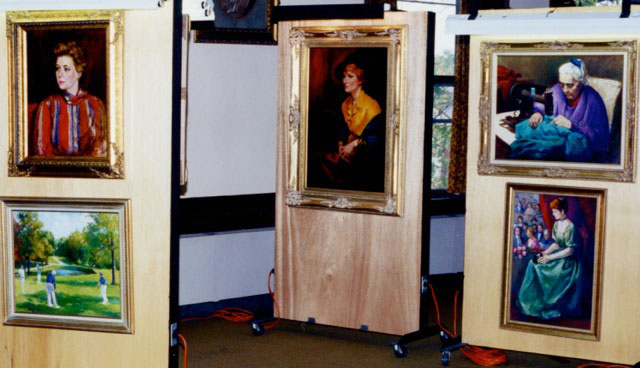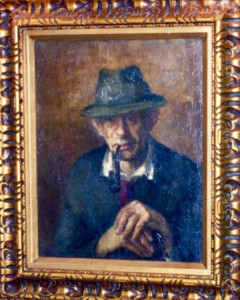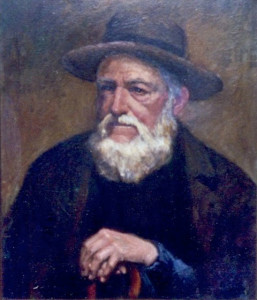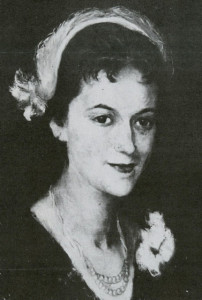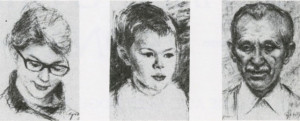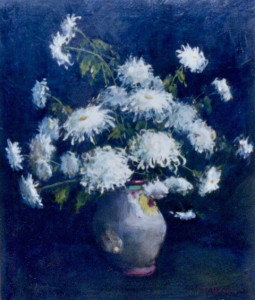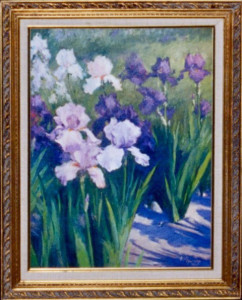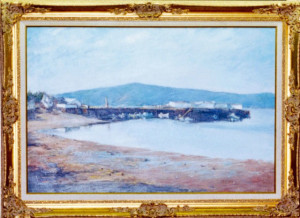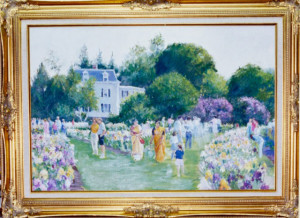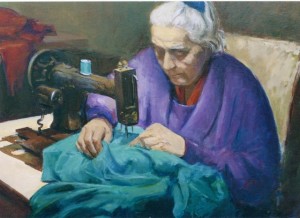MIHÁLY GYIRÁSZI
PAINTER
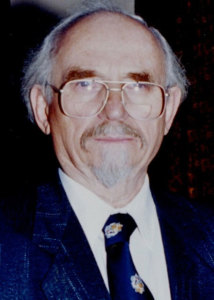
Mihály Gyirászi was born in Szakoly, Hungary in 1918. Even as a child he was interested in drawing and painting. At the age of 16, he painted an altar picture for the Greek Catholic Church in Szakoly, and about the same time he won a prize with one of his charcoal portraits. As a high school student he received a scholarship to the Artist Camp at Miskolc for two months, where talented artists gathered together to work in their special fields.
During his senior year, he arranged an exhibition at his High School of Nagykálló, which was visited by the wife of Hungary’s Commissioner of Education, Mrs. Ferenc Keresztes Fischer, who became an avid patron of Mr. Gyirászi after this exhibition.
Thereafter, the young student received many portrait orders from people in high positions. During the summer of 1940, he painted at least seven portraits, among them a large one in oil of Miklós Dudás, a bishop of the Greek Catholic Church.
The Hungarian national press began writing about him, calling him the new star and a great promise in the history of Hungarian fine art.
He received a county scholarship, with which he could continue his studies at the Academy of Fine Arts in Budapest in 1940. Already the following yearthe Metropolitan Museum of Art in Budapest purchased two of his works.
In 1942 he had an exhibition of his complete works at Nyíregyháza, which was followed by excellent moral and economic success as more of his paintings had been sold.
From October 1942 to October 1945, due to the war, his studies had been interrupted as the army enlisted him. In 1945 he was able to continue his studies at the Academy of Fine Arts and graduated in 1948.
In 1947 at an Academy exhibition he won a prize for one of his oil paintings
In 1948 the Art Council recommended him for a study journey to Italy and France, but the Communist Government did not give him permission to leave the country.
In the year of 1950 at a national landscape exhibition he won a prize with his oil painting, called Budakeszi. The state reproduced it and issued it in card form selling more than 100,000 samples of them.
After the Hungarian Revolution in 1956, he escaped to Sweden, and in 1965, he came to the United States to start a new and hopeful life. He has been painting ever since, winning his last award from the State of New Jersey in 1993. He had various exhibits in the USA. Some of these took place in New York City, among them one at the Carnegie International Center. He also exhibited in New Jersey, Connecticut, Rhode Island, Massachusetts, New York State, Delaware, Maryland, Virginia, Pennsylvania, Washington D.C.
“Cosa bella mortal passa e non d’arte.” Leonardo da Vinci
American Hungarian Museum, No. 30, 1994
